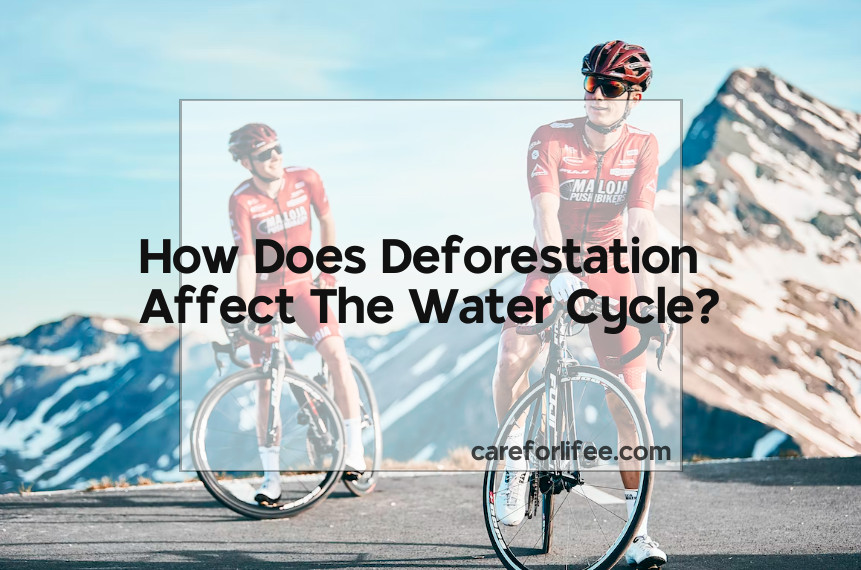How Does Deforestation Affect The Water Cycle?
Deforestation affects the water cycle by disrupting the natural flow of water in an area.
Deforestation can have a big impact on the water cycle. When trees are removed, the ground is left bare. This means that there is less evapotranspiration, which is when water is evaporated from the ground and transpired from plants. This can lead to less rainfall and more drought. In addition, deforestation can lead to soil erosion. This means that when it does rain, the water runs off the land more quickly and doesn’t have a chance to seep into the ground. This can lead to floods and landslides.
How Does Deforestation Affect The Water Cycle?
The loss of trees causes a decrease in evapotranspiration, which in turn affects the water cycle.

Deforestation is the removal of forests, by whatever means. Deforestation can refer to the natural loss of trees, as well as the potential destruction of forests due to the practices of people. Deforestation has a profound impact on the water cycle.
The water cycle is the process by which water circulates through the Earth’s atmosphere, land, and oceans. It is a vital process for life on Earth.
Deforestation can impact the water cycle in a number of ways. For example, trees help to regulate the temperature of the atmosphere and the amount of water vapor in the air. When trees are removed, the land surface warms and dries out, which can lead to more evaporation and less precipitation.
In addition, trees help to prevent soil erosion. Their roots bind the soil in place, and their canopies slow the flow of water, allowing it to seep into the ground rather than run off. When trees are removed, the soil is more likely to be eroded by wind and rain. This can lead to lower water tables and less groundwater available for plants and animals.
Deforestation can also impact the quality of water. Trees help to filter pollutants out of the air and water. When they are removed, the water is more likely to be contaminated with harmful chemicals and sediments.
All of these impacts on the water cycle can have serious consequences for the environment and the people who depend on it. Deforestation can lead to more frequent and intense floods and droughts. It can also contribute to water pollution and the spread of disease.
In order to protect the water cycle, it is important to reduce deforestation. This can be done through a variety of methods, such as planting trees, protecting existing forests, and reducing the demand for products that come from deforestation.
How Does Deforestation Affect The Water Table?
Deforestation can lead to a decrease in the water table.
Deforestation is the conversion of a forested area to land that is not forested. Trees are cut down and the land is cleared for other uses. Deforestation can have a number of impacts on the water table.
The water table is the upper level of an underground water body in which the water is under enough pressure to rise to the surface. The water table is the boundary between the saturated and unsaturated zones.
When trees are present, they act as a sponge and help to regulate the water table. Trees take in water through their roots and release it into the atmosphere through their leaves. This process helps to keep the water table from rising too high or falling too low.
Deforestation can lead to a decrease in the water table. When trees are removed, there is less surface area for water to be absorbed. This can lead to a decrease in the water table.
Deforestation can also lead to an increase in the water table. When trees are removed, the soil is no longer protected from the sun and rain. This can lead to the soil becoming oversaturated and the water table rising.
Deforestation can have a significant impact on the water table. It is important to consider the potential impacts of deforestation before clearing any forested areas.
FAQ
How Does Deforestation Affect Evaporation?
How Does Deforestation Affect Precipitation?
Conclusion
Deforestation has a profound impact on the water cycle. By removing trees, we disrupt the natural process of evapotranspiration, which leads to less water vapor being released into the atmosphere. This, in turn, can lead to less precipitation and less water available for plants, animals, and humans.
I hope that you understand now how deforestation can impact the water cycle. If you have any questions, please feel free to ask them in the comments section below.







